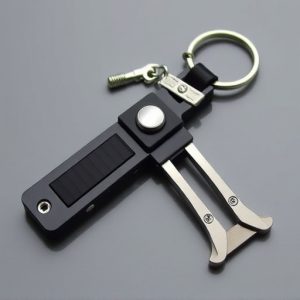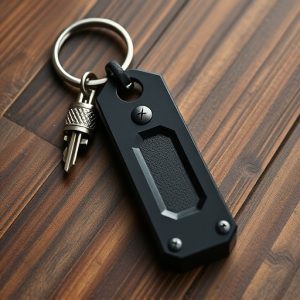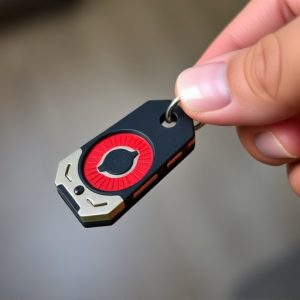Heart Attack Self-Defense Keychain: Legal Carry States & Benefits Explored
The Heart Attack Self-Defense Keychain is a compact, life-saving tool that alerts emergency services…….
The Heart Attack Self-Defense Keychain is a compact, life-saving tool that alerts emergency services and shares your location upon activation, aimed at aiding individuals in cardiac emergencies, especially travelers or those in remote areas. Legality varies across states in the US, with some permitting open carry while others require licenses or permits. Despite its benefits like an integrated alarm and emergency buttons, challenges include device reliability, privacy concerns, and the need for user training.
“The concept of self-defense has evolved beyond traditional weapons, introducing innovative tools like the Heart Attack Self-Defense Keychain. This compact device aims to provide individuals with a means of protection in unexpected situations, especially during heart attacks. In this article, we’ll explore the legal considerations surrounding these protective keyring devices and delve into the states that permit their carry. We’ll also analyze the benefits, potential challenges, and overall impact of incorporating such a unique self-defense mechanism.”
- Understanding Heart Attack Self-Defense Keychain: A Concept
- Legal Considerations for Carrying Protective Keyring Devices
- States Allowing Legal Carry of Self-Defense Keychains
- Benefits and Potential Challenges of Using a Heart Attack Self-Defense Keychain
Understanding Heart Attack Self-Defense Keychain: A Concept
The Heart Attack Self-Defense Keychain is an innovative concept designed to empower individuals with a simple yet potentially life-saving tool. This compact device attaches to your keychain and aims to provide immediate assistance during a cardiac emergency, such as a heart attack. The idea behind this product is to give users the confidence to take control in a critical situation, even if they have no medical training.
By pressing a button on the keychain, it alerts emergency services and provides vital information about the user’s location. This quick response time could be crucial in saving lives, as every minute counts during a heart attack. The concept is especially relevant for those who frequently travel or spend time in remote areas where immediate medical assistance might be limited.
Legal Considerations for Carrying Protective Keyring Devices
In many regions, protective keyring devices, such as self-defense keychains designed to assist during a heart attack or medical emergency, are gaining traction for their potential life-saving capabilities. However, legal considerations play a crucial role in determining where and how these devices can be carried. The legality of Heart Attack Self Defense Keychain varies across states, with some permitting their open carry while others restrict it to concealed carrying with specific licenses or permits.
Understanding local laws is essential for individuals considering the use and carry of such devices. Some states may have provisions for “stand-alone” self-defense tools, allowing for their possession without a license or permit. Conversely, other jurisdictions might classify protective keyring devices as restricted or regulated items, mandating specific registration, permitting, or even training requirements before legal carrying is permitted. Staying informed about these legal nuances ensures compliance and empowers individuals to effectively utilize these potential lifesaving tools when needed.
States Allowing Legal Carry of Self-Defense Keychains
In the United States, the legalities surrounding self-defense keychains vary greatly from state to state. Several states allow citizens to carry protective keyring devices for personal safety. These heart attack self-defense keychain tools are designed with a sharp edge or point, intended for use in emergency situations where an individual may need to defend themselves.
Key states like Texas, Florida, and California have specific laws enabling the legal carry of such devices. Each state has its own set of regulations regarding what constitutes a legal self-defense weapon and the circumstances under which it can be carried. It’s crucial for individuals considering carrying a heart attack keychain for protection to understand their state’s laws to ensure compliance with local regulations.
Benefits and Potential Challenges of Using a Heart Attack Self-Defense Keychain
The Heart Attack Self-Defense Keychain offers several significant advantages for personal safety, making it a compelling option for individuals concerned about their security. This compact device can be easily carried on keys, ensuring that help is readily available in case of an unexpected cardiac event. It provides peace of mind, allowing users to engage in everyday activities without constant anxiety about potential health risks. The keychain’s design includes features like a built-in alarm and emergency contact buttons, enabling quick response times during medical emergencies. This can be especially crucial in remote areas or when assistance is delayed due to circumstances beyond control.
Despite its benefits, there are challenges to consider. One primary concern is the reliability of the device, as any technical malfunction could hinder its effectiveness. Additionally, while it offers a quick alert system, the presence of bystanders during an incident might be limited, especially in private spaces. Privacy and consent become essential factors, as users must ensure that their personal information is protected and that they have the legal right to activate such a device in various locations. Moreover, training and familiarity with the keychain’s operation are vital to ensure its successful deployment when needed.
The Heart Attack Self-Defense Keychain presents a innovative solution for personal safety, offering individuals a discreet and readily accessible means of protection. Understanding the legal landscape surrounding these devices is paramount, as states differ in their regulations regarding protective keyring equipment. By exploring the benefits and challenges, individuals can make informed decisions about whether a Heart Attack Self-Defense Keychain is the right choice for them. This comprehensive guide empowers folks to stay prepared and potentially save a life.


